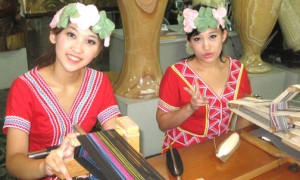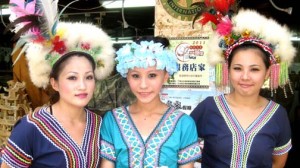Taiwan’s presence in the high technology world has given it an aura of modernity that somewhat masks the fact that it has an extraordinary richness and diversity of aboriginal peoples. These diverse tribes are all part of the Austronesian language group, which spans an incredible distance, from Madagascar to Easter Island, and Taiwan to New Zealand, and comprises over 200 million people. Traditionally, many of Taiwan’s aboriginals were headhunters, and fought with Portuguese, Dutch, Chinese and Japanese invaders, among others, over centuries. They have lived in Taiwan for an estimated 4,000 years, and share cultural elements with indigenous groups in the Philippines, Malaysia, and Indonesia. Today, they are considered an important element of the Taiwanese population, with cultural villages in virtually every part of Taiwan. The Shung Ye Museum in Taipei makes an ongoing effort to document and chronicle these groups, and the large format photography book Taiwan’s Aboriginal Peoples discusses and documents some of the major groups.
Taiwan’s officially recognized aboriginal groups are: the Amis, Atayal, Bunun, Kavalan, Paiwan, Puyuma, Rukai, Saisiyat, Sakizaya, Sediq, Thao, Truku (Taroko), Tsou, and Yami (Tao) tribes. Linguists and anthropologists have identified a number of other Taiwanese groups sharing the same language family. They include the Basay, Ketagalan, Kulon, Taokas, Pazeh, Papora, Babuza, Hoanya, Siraya, and Makatao. These latter ten groups formerly occupied the northern and western plains until Japanese occupation (1895-1945), and are now known as the Pingpu.
Aboriginal cultural villages can be easily visited in Taiwan, where you’ll generally see song and dance programs, be able to purchase aboriginal crafts, visit dwellings, and even stay overnight. One such village close to Taipei is the Atayal Cultural Village at Wulai, 40 minutes away.


Leave a Reply